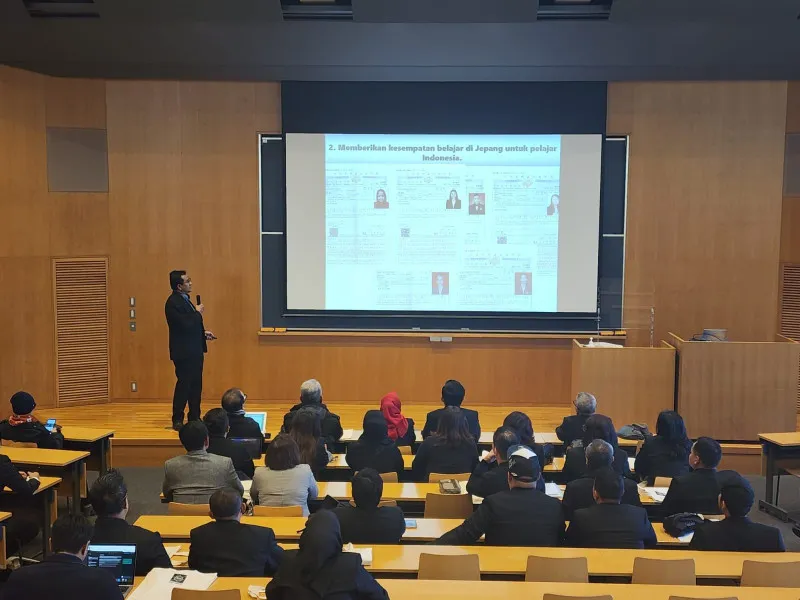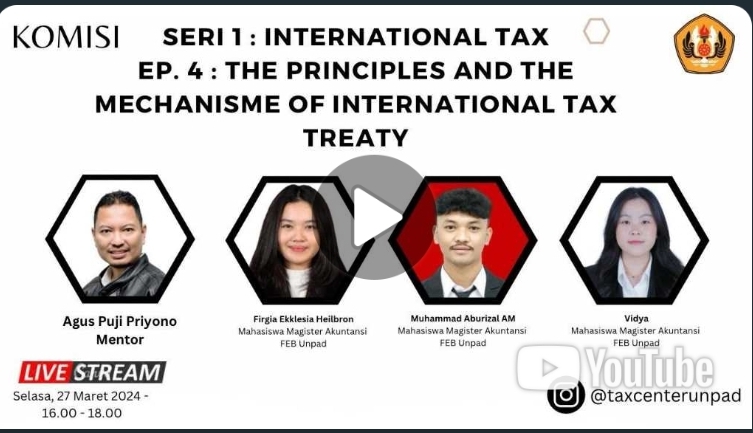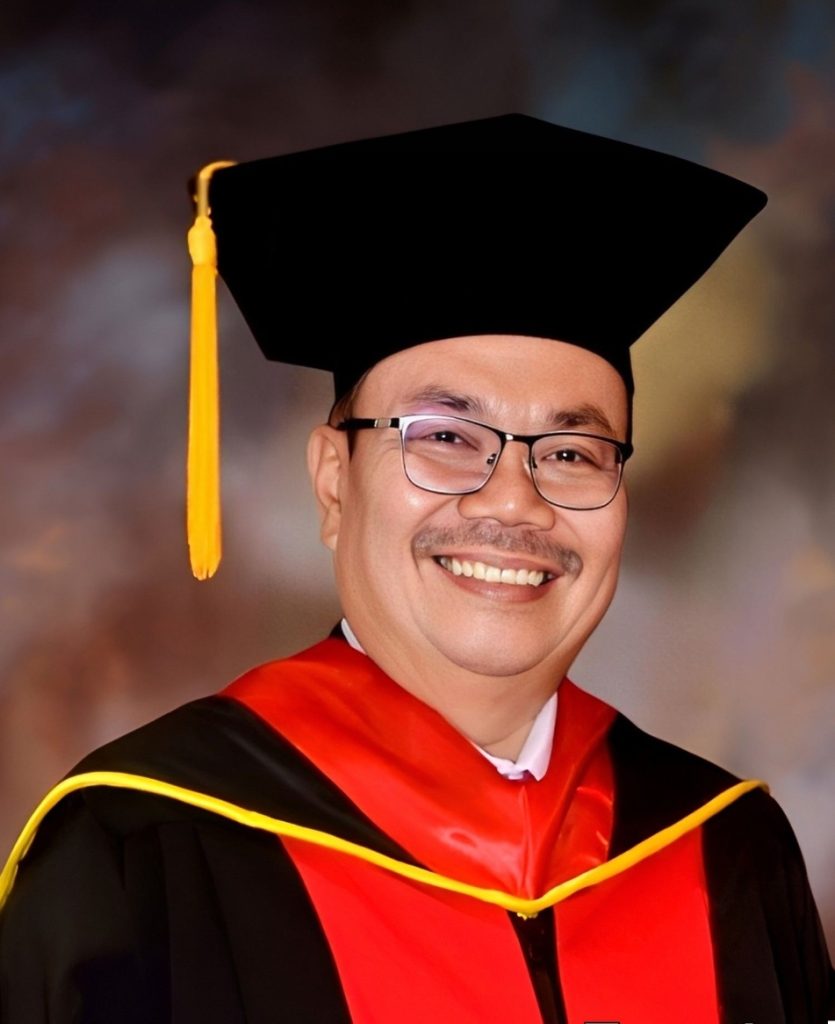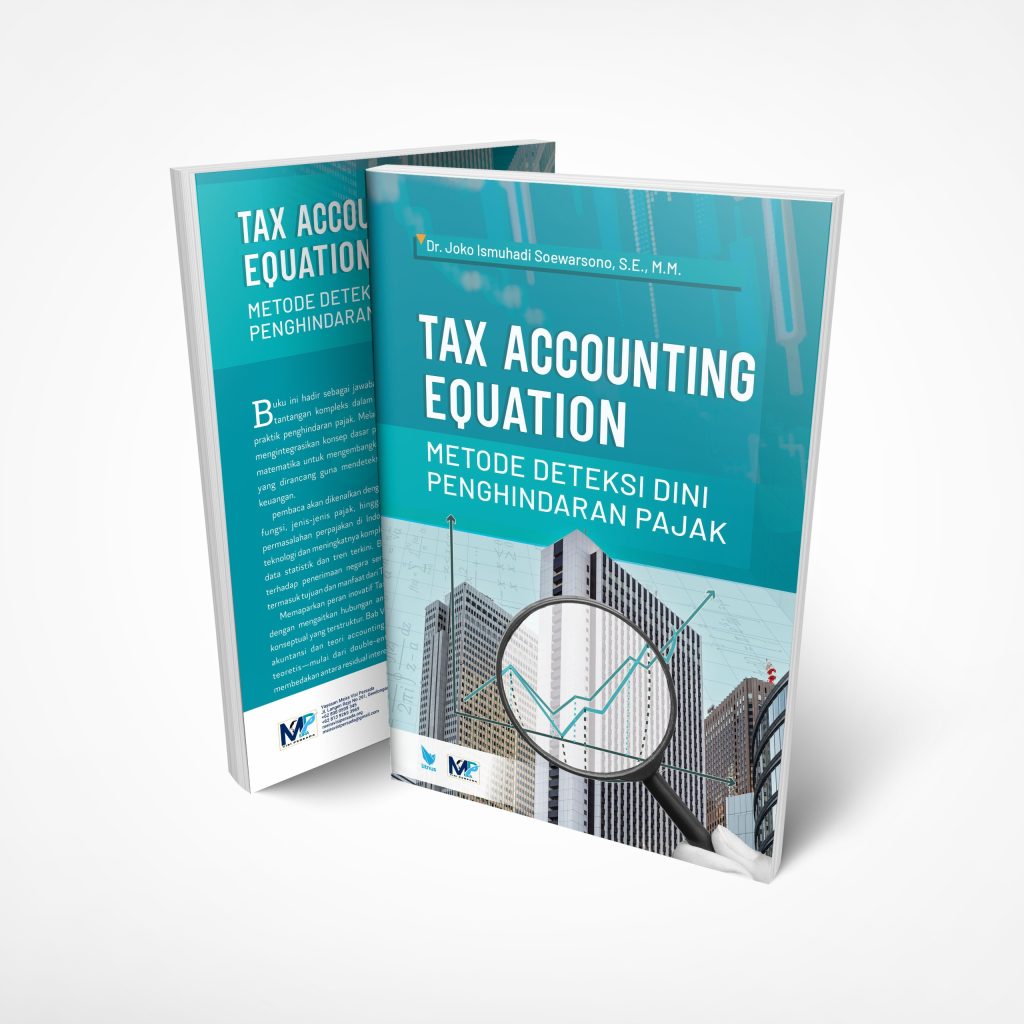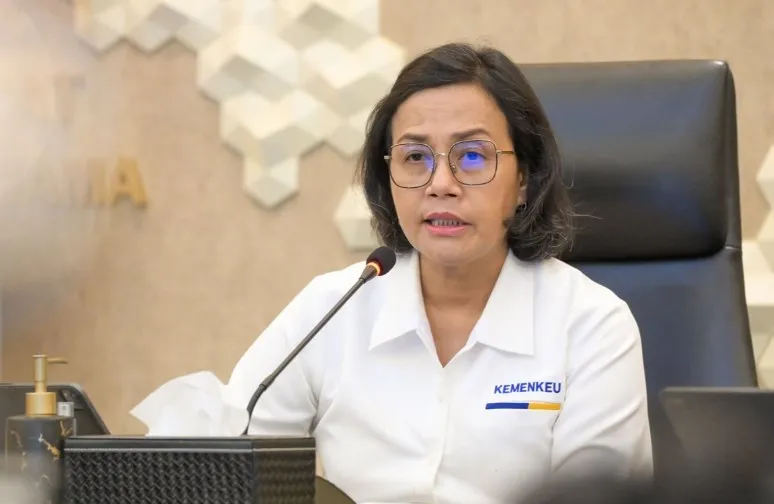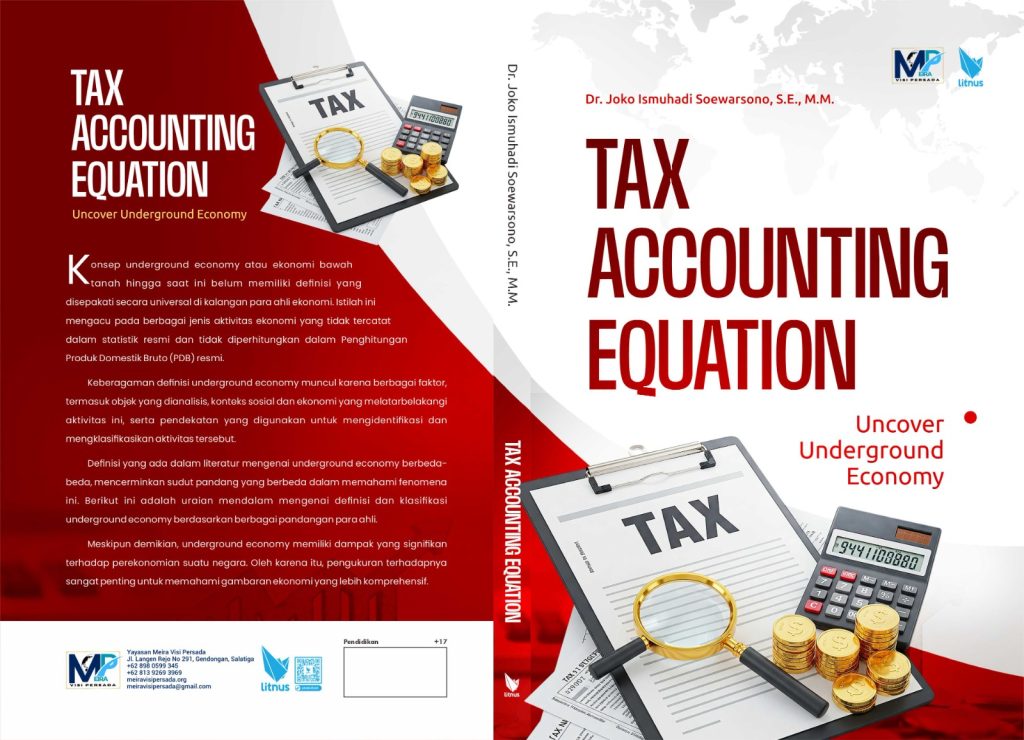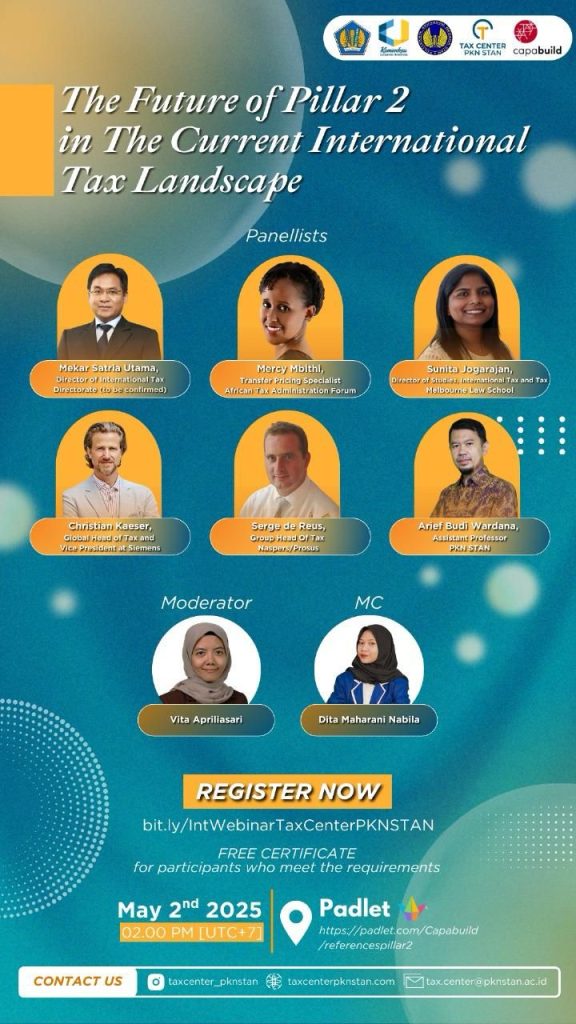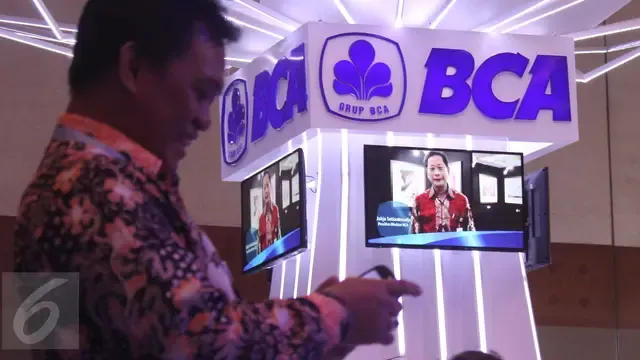
Unmasking Hidden Economies: Dr. Joko Ismuhadi’s Innovative Approach to Tax Evasion Detection in Indonesia
- Ekonomi
Thursday, 10 April 2025 23:19 WIB

Jakarta, fiskusnews.com:
I. Executive Summary:
Dr. Joko Ismuhadi, a distinguished Indonesian tax expert and academic, has made significant contributions to the field of tax and forensic accounting. His innovative concept, the Tax Accounting Equation (TAE), stands out as a powerful tool designed to detect hidden economic activities that frequently contribute to widespread tax evasion within Indonesia. By analyzing discrepancies between reported financial figures and the underlying economic realities, the TAE offers a promising avenue for regulatory agencies and tax authorities to enhance tax transparency and ultimately improve revenue collection for the nation. Dr. Ismuhadi’s work has garnered attention in both academic circles and among policymakers, positioning him as a key figure in the ongoing efforts to strengthen Indonesia’s taxation system.
II. Introduction: The Challenge of Tax Evasion and the Role of Forensic Tax Accounting:
Tax evasion is a pervasive global issue that undermines the financial stability of nations and compromises the provision of essential public services. The deliberate failure to report income or assets to tax authorities results in significant revenue losses for governments worldwide, hindering their ability to fund infrastructure development, healthcare, education, and social welfare programs. As tax evasion schemes become increasingly sophisticated, often involving intricate financial transactions and the exploitation of legal loopholes, traditional tax accounting methods focused on compliance and reporting alone are often insufficient to uncover these illicit activities. This necessitates the application of specialized skills and techniques, leading to the growing importance of forensic tax accounting. This specialized field combines the principles of accounting and auditing with investigative skills to identify, analyze, and interpret financial evidence in order to detect financial irregularities, fraud, and, specifically in this context, tax evasion. Forensic accountants employ a range of techniques, including financial statement analysis, asset tracing, and data analytics, to delve deeper into financial records and uncover hidden transactions or misrepresentations intended to evade tax obligations. Dr. Joko Ismuhadi’s work in Indonesia represents a notable contribution to this critical field, offering an innovative approach to tackle the persistent challenge of tax evasion through his development and popularization of the Tax Accounting Equation (TAE).
III. Dr. Joko Ismuhadi: A Profile of Expertise:
Dr. Joko Ismuhadi’s expertise in tax and forensic accounting is underpinned by a strong academic foundation and extensive professional experience. He holds a Master of Science degree from Padjadjaran University in Bandung, Indonesia. Further solidifying his credentials, he earned a doctorate in law from Borobudur University. His doctoral dissertation, titled “Penanganan Manipulasi Perpajakan oleh Korporasi pada Tindak Pidana Pajak dengan Perbuatan Pencucian Uang” (Handling of Tax Manipulation by Corporations in Tax Crimes with Money Laundering Acts), underscores his specific focus on the intricate relationship between tax evasion and the subsequent efforts to conceal illicitly obtained wealth. This research highlights a deep understanding of how tax evasion often serves as a predicate offense for money laundering, necessitating a comprehensive strategy for detection and legal action that addresses both aspects of financial crime.
Complementing his academic achievements, Dr. Ismuhadi possesses significant practical experience in the field of taxation. Since August 2008, he has been working at the Directorate Generale Tax in Jakarta, Indonesia, where he currently holds the position of Supervisor and serves as a Tax Auditor. His long tenure within the tax authority has provided him with invaluable firsthand exposure to the various methods employed by individuals and corporations to evade their tax obligations, as well as the inherent limitations of traditional tax audit procedures in uncovering these sophisticated schemes. This practical experience likely informs his theoretical work, ensuring that his proposed solutions, such as the TAE, are grounded in the realities of tax administration and the challenges faced by tax auditors in their daily work. His supervisory role further indicates an understanding of the strategic and operational aspects of tax enforcement within the Indonesian context.
Dr. Ismuhadi’s profile on ResearchGate highlights a diverse range of skills and expertise relevant to his work. These include tax planning, scheme transactions, financial engineering, corporate finance, financial analysis, investment, and valuation. This broad skillset is crucial in the realm of forensic tax accounting, as tax evasion often involves complex financial instruments and meticulously structured transactions designed to obscure their true nature and tax implications. His proficiency in these areas enables him to analyze intricate financial arrangements and identify potential indicators of tax avoidance or evasion that might escape the attention of those with a more conventional accounting background. Furthermore, his involvement in public discussions and training on taxation, as demonstrated by his participation in the MVP Training Series, signifies a commitment to sharing his knowledge and fostering a greater understanding of tax principles within the wider community. This proactive approach to disseminating expertise underscores his dedication to promoting tax compliance and contributing to a more transparent and accountable financial environment in Indonesia.
IV. Deconstructing the Tax Accounting Equation (TAE):
At the heart of Dr. Ismuhadi’s contribution lies the Tax Accounting Equation (TAE), a concept that builds upon the fundamental principles of accounting to specifically target the detection of tax evasion. While the basic accounting equation (Assets = Liabilities + Equity) serves as the cornerstone of double-entry bookkeeping, ensuring that a company’s resources are balanced by its obligations and owners’ investments, the TAE takes a more analytical approach. Instead of merely focusing on the static balance of these elements, the TAE examines the dynamic relationships between them, particularly the interplay between revenue, expenses, assets, and liabilities, to identify inconsistencies that may be indicative of intentional misreporting aimed at reducing tax liability.
Dr. Ismuhadi presents the TAE in two distinct but related forms :
- Profits Loss & Balance Sheet Equally: Revenues – Expenses = Assets – Liabilities. This formulation emphasizes the inherent link between a company’s income statement (Revenues – Expenses, representing profit or loss) and its balance sheet (Assets – Liabilities, representing net assets or equity). Under normal circumstances, the results reflected in the profit and loss statement should ultimately be reflected in the changes in the balance sheet. Discrepancies in this equivalence can signal potential manipulations.
- Tax Purpose Analytically: Revenues = Expenses + Assets – Liabilities. This form specifically highlights the relationship between a company’s revenues and its liabilities. Dr. Ismuhadi posits that there should generally be a positive correlation between revenue generation and the incurrence of liabilities related to business operations. An unexplained decrease in reported revenues coupled with an increase in liabilities could suggest that income is being disguised as debt to avoid taxation. This inverse relationship, where revenue appears to be suppressed while liabilities are inflated, is a key indicator that the TAE is designed to detect.
The theoretical basis of the TAE lies in its ability to uncover what Dr. Ismuhadi refers to as “financial engineering” – the deliberate misrecording of accounting transactions to obscure the true financial position and potentially evade taxes such as Corporate Income Tax (PPh) and Value Added Tax (VAT). For instance, a taxpayer might record revenues as liabilities, making it appear as though funds received are loans rather than taxable income from sales. Conversely, expenses might be recorded as assets to inflate the asset base and understate profitability. These manipulations can be facilitated through the use of “Clearing Accounts” and bank overdraft facilities, further complicating the task of traditional audits. The TAE acts as an analytical lens to scrutinize these relationships and identify such potentially fraudulent accounting practices early in the examination of a taxpayer’s financial statements.
Dr. Ismuhadi’s development of the TAE is rooted in a mathematical approach, which he terms the Mathematical Rationality Approach. This led to the formulation of the expanded Mathematical Accounting Equation (MAE): Asset = Liability + Equity + {(Revenues – Expenses) – Dividend}. This MAE can be mathematically rearranged to derive the TAE. The MAE serves as a more comprehensive framework to assess whether corporate taxpayers are making a significant contribution to corporate income tax or if there is an unusual lack of change in equity from retained earnings without the declaration of dividends. The mathematical rigor underlying the TAE provides a more objective and systematic method for analyzing financial data and identifying potential anomalies that warrant further investigation by tax authorities. By moving beyond simple ratio analysis, the TAE offers a more nuanced and potentially more effective tool for detecting sophisticated tax evasion tactics.
V. TAE as a Tool for Unmasking the Underground Economy in Indonesia:
A primary focus of Dr. Ismuhadi’s work is the “underground economy” in Indonesia, which encompasses a wide range of hidden economic activities that often operate outside the purview of taxation and regulatory oversight. This shadow economy presents a significant challenge to tax authorities globally, as it represents a substantial loss of potential tax revenue and can create an uneven playing field for legitimate businesses. Dr. Ismuhadi’s TAE is specifically designed to help unmask these hidden economic activities by analyzing discrepancies in the financial statements of entities that might be involved.
The TAE’s emphasis on the relationship between revenue and liabilities is particularly relevant in detecting tax evasion within the underground economy. For example, a business engaged in significant unreported cash transactions within the underground economy might attempt to conceal this income by underreporting its revenues in its formal financial statements. To maintain a semblance of balance, this underreporting of revenue might be accompanied by an artificial inflation of liabilities. The TAE’s second form (Revenues = Expenses + Assets – Liabilities) is specifically designed to flag such instances where a decrease in reported revenue coincides with an unexpected increase in liabilities, potentially indicating the concealment of income derived from underground activities.
Consider the example of a mining company, as highlighted in the research material. While reporting high revenue from exports, the company might also report unusually high liabilities to related parties. This discrepancy could be a red flag for transfer pricing manipulation, a common method used to shift profits to lower-tax jurisdictions, potentially involving entities operating within the less transparent underground economy. Dr. Ismuhadi’s TAE can help identify such inconsistencies, prompting tax authorities to delve deeper into the nature of these related-party transactions and assess whether they are legitimate or designed to evade taxes.
Dr. Ismuhadi emphasizes that a significant surge in a company’s liabilities without a corresponding increase in its reported revenue should be treated as a critical warning sign. This unusual financial pattern suggests that the company might be concealing income, possibly derived from activities within the underground economy, and using inflated liabilities to offset the absence of this reported revenue in the accounting equation. By focusing on this specific relationship, tax authorities can utilize the TAE to prioritize their investigations, directing their limited resources towards entities exhibiting these suspicious financial behaviors and potentially uncovering significant amounts of previously untaxed income generated within the hidden sectors of the Indonesian economy.
VI. Impact and Potential of TAE on Tax Policy and Enforcement:
Dr. Ismuhadi’s Tax Accounting Equation holds significant potential for enhancing the effectiveness of tax audits and investigations in Indonesia. By providing tax authorities with a forensic tool to analyze financial statements, the TAE can help identify high-risk cases that warrant closer scrutiny. Instead of relying solely on random audits or traditional risk assessment models, tax authorities can leverage the TAE to pinpoint entities exhibiting suspicious financial patterns, such as the inverse relationship between revenue and liabilities, thereby streamlining their enforcement efforts and making more efficient use of their resources. This targeted approach can lead to a higher success rate in uncovering tax evasion, including activities linked to the underground economy, compared to less focused audit strategies.
The broader implications of the TAE extend to improving overall tax compliance and potentially increasing state revenue in Indonesia, a nation that faces a considerable tax gap – the difference between the amount of tax that should be collected and the amount that is actually collected. Indonesia’s new president has set ambitious goals for increasing the nation’s tax revenue ratio. A significant challenge in achieving this goal lies in effectively taxing the shadow economy, which represents a substantial portion of the nation’s total economic activity. Dr. Ismuhadi’s TAE offers a specific and targeted approach to address this challenge by providing a method to detect potential tax evasion associated with these hidden economic activities through the analysis of reported financial data. By enabling tax authorities to uncover previously untaxed income, the widespread adoption and effective implementation of the TAE could contribute significantly to bridging the tax gap and boosting overall state revenue, providing the government with more resources to fund essential public services and development projects.
Furthermore, the potential of the TAE extends beyond the borders of Indonesia. Countries around the world grapple with the challenges of tax evasion and substantial informal economies. Dr. Ismuhadi’s innovative approach to financial analysis, specifically designed to detect hidden economic activities, has garnered international attention. The core principles of the TAE, particularly its focus on the relationship between revenue and liabilities, are likely to be applicable in various economic contexts where tax evasion through the manipulation of these financial elements is prevalent. Therefore, other nations facing similar challenges could potentially adapt and implement the TAE as a valuable tool to improve financial transparency and combat tax evasion within their own jurisdictions, contributing to a more equitable global financial system.
VII. Academic and Policy Perspectives on Dr. Ismuhadi’s Methodologies:
Dr. Ismuhadi’s work and the Tax Accounting Equation have sparked discussions within Indonesian academic and policy circles regarding their effectiveness, limitations, and overall impact on tax administration. Notably, his concept has received appreciation from the Head of the Tax Service Office (KPP) for the Big Four Taxpayers, indicating its practical relevance and potential value in the eyes of tax authorities dealing with large and often complex corporate entities. This recognition from within the tax administration lends credibility to Dr. Ismuhadi’s work and suggests that the TAE is not merely a theoretical construct but has practical applications in real-world tax enforcement scenarios.
While the TAE presents a promising avenue for enhancing tax evasion detection, it is important to acknowledge its potential limitations. As highlighted in the research material, the TAE should be considered a valuable tool for initial analysis and for identifying potential red flags, but it should not be viewed as an infallible method for definitively detecting fraud or predicting financial success. Further investigation and the application of other complementary forensic accounting techniques and information are crucial to obtain a comprehensive understanding of a company’s financial activities and to confirm any suspicions of tax evasion. Over-reliance on any single tool could lead to overlooking other important indicators of financial wrongdoing. Therefore, the TAE is most effective when integrated into a broader framework of tax audit and investigation procedures.
Dr. Ismuhadi is also an advocate for strengthening the “Substance Over Form” doctrine and implementing the General Anti Avoidance Rule (GAAR) within the Indonesian tax system. These principles aim to prevent taxpayers from using legal structures or engaging in transactions solely for the purpose of avoiding taxes, even if they technically comply with the literal interpretation of the law. Dr. Ismuhadi’s work on the TAE aligns with these principles by providing a practical analytical tool that can help identify transactions where the reported form might deviate significantly from the underlying economic reality, potentially indicating tax avoidance or evasion motives. By focusing on the economic substance of transactions rather than just their legal form, both the TAE and these legal doctrines contribute to a more robust and equitable tax system in Indonesia.
VIII. Current Initiatives and Future Directions:
Dr. Ismuhadi’s research agenda extends beyond the initial development of the TAE, encompassing ongoing initiatives related to tax reform and enforcement in Indonesia. His doctoral research, focusing on the handling of tax manipulation and its connection to money laundering, demonstrates his commitment to addressing the broader spectrum of financial crimes related to taxation. His proposals for the simultaneous prosecution of tax crimes and money laundering offenses, as well as the potential implementation of corporate criminal liability within Indonesian tax regulations, reflect a forward-thinking approach to strengthening the legal framework for combating tax evasion, particularly by corporate entities. These initiatives suggest that Dr. Ismuhadi views the TAE as an integral part of a more comprehensive strategy that includes not only advanced detection tools but also more effective legal remedies and deterrents.
Looking towards the future, there is significant potential for integrating the TAE into Indonesia’s tax administration system, particularly within the context of ongoing digitalization efforts such as the development of the new Coretax system. A modern, digitalized tax infrastructure can leverage data analytics to identify patterns and anomalies in financial data that might be indicative of tax evasion. Incorporating the logic and formulas of the TAE into such a system could automate the initial screening of tax returns and financial data, allowing tax authorities to more efficiently identify potential cases for further investigation. This integration could significantly enhance the tax administration’s ability to detect and prevent tax evasion on a larger scale, contributing to improved tax compliance and increased revenue collection for Indonesia.
IX. Conclusion:
Dr. Joko Ismuhadi stands as an influential figure in Indonesian tax and forensic accounting, primarily recognized for his innovative Tax Accounting Equation (TAE). His work provides a valuable lens through which to analyze financial data, specifically targeting the detection of hidden economic activities that fuel tax evasion, particularly within Indonesia’s significant underground economy. The TAE’s focus on the relationship between revenue and liabilities offers a practical and theoretically sound approach for tax authorities to identify suspicious financial patterns and prioritize their enforcement efforts. While acknowledging its limitations as one tool within a broader forensic accounting framework, the TAE holds considerable promise for enhancing tax transparency, improving tax compliance, and ultimately contributing to a more equitable and sustainable tax system in Indonesia. Furthermore, the principles underpinning the TAE offer valuable insights for other nations grappling with similar challenges in combating tax evasion and managing their informal economies.
Table 1: Components of the Tax Accounting Equation (TAE) and Their Significance in Detecting Tax Evasion
| Component | TAE Formula (Form 1) | TAE Formula (Form 2) | Expected Relationship under Normal Circumstances | Relationship Indicative of Potential Tax Evasion | Explanation of Why This Relationship Matters for Detection |
| Revenues | Revenues – Expenses = Assets – Liabilities | Revenues = Expenses + Assets – Liabilities | Generally increase with business activity and growth. | Unexplained decrease, especially when other economic indicators suggest otherwise. | Could indicate underreporting of income to reduce taxable profit. |
| Expenses | Revenues – Expenses = Assets – Liabilities | Revenues = Expenses + Assets – Liabilities | Should be reasonably related to the generation of revenue. | Unexplained increase or decrease that doesn’t align with business activity. | Could indicate inflated expenses to reduce taxable profit or suppressed expenses to hide profitability. |
| Assets | Revenues – Expenses = Assets – Liabilities | Revenues = Expenses + Assets – Liabilities | Represent the resources owned by the company with future economic value. | Unexplained significant changes without corresponding revenue or expense activity. | Could indicate hidden assets or fictitious assets used to manipulate financial statements. |
| Liabilities | Revenues – Expenses = Assets – Liabilities | Revenues = Expenses + Assets – Liabilities | Typically increase with borrowing or operational needs related to revenue generation. | Unexplained increase, especially when reported revenues are decreasing or stagnant. | Could indicate income being disguised as debt to avoid taxation or fictitious liabilities to offset overstated assets or understated equity. This is a key focus of the TAE. |
Reporter: Marshanda Gita – Pertapsi Muda
Share
Berita Lainnya
IHT SDI RSI Sultan Agung Semarang
SOLUSI PERPAJAKAN TERKINI DALAM ERA DIGITAL DAN TRANSPARANSI GLOBAL
The Tax Accounting Equation: A Forensic Tool for Detecting Underground Economic Activity and Tax Evasion
RAHASIA MENGHINDARI KESALAHAN FATAL PELAPORAN SPT PPh BADAN HUKUM
Laporan Analisis Komprehensif Usulan Perubahan Pasal 4 Ayat (1) UU PPh: Penambahan Frasa “atau untuk mengurangi utang”
Pajak atas Penggunaan Pendapatan: Sebuah Strategi untuk Mengatasi Ekonomi Bawah Tanah
Rekomendasi untuk Anda

Berita Terbaru
Eksplor lebih dalam berita dan program khas fiskusnews.com
Tag Terpopuler
# #TAE
# #TAX ACCOUNTING EQUATION
# #TAX FRAUD
# #TAX EVASION

